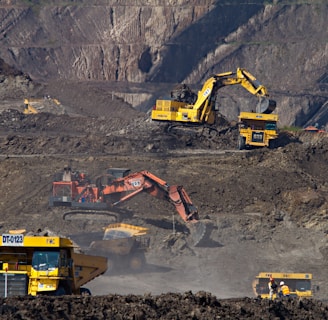Mining Law in Australia
AUSTRALIA
11/25/20241 min read


Australia, with its vast mineral wealth, is a major player in the global mining industry. However, despite its economic significance, mining activities raise important legal debates concerning environmental impacts and Indigenous peoples' rights. This article explores the legal framework of mining in Australia, focusing on environmental protection and Indigenous rights.
1. Legal Framework for Mining
Mining law in Australia operates at both state and federal levels. Each state enforces its own regulations for managing underground resources. For instance:
Queensland’s Mineral Resources Act 1929 governs resource licensing and environmental compliance.
Western Australia’s Mining Act 1978 addresses mining permits and Indigenous land rights.
At the federal level, laws like the Environment Protection and Biodiversity Conservation Act 1999 (EPBC Act) require environmental assessments for mining projects.
2. Environmental Impacts and Legal Obligations
Mining can cause significant environmental issues, such as habitat destruction, water pollution, and biodiversity loss. To mitigate these impacts:
Environmental Impact Assessments (EIA) are mandatory.
Mining companies must submit rehabilitation plans and minimize ecological damage.
States like Queensland and Western Australia enforce strict environmental regulations to safeguard ecosystems.
3. Indigenous Rights in Mining Law
Indigenous Australians (Aboriginal and Torres Strait Islander peoples) hold a unique position under mining law. Their land rights are protected under the Native Title Act 1993, which:
Requires mining companies to secure consent from Indigenous communities.
Grants communities financial compensation and a voice in project negotiations.
However, conflicts persist. For example, Rio Tinto's 2020 destruction of a sacred Aboriginal site at Juukan Gorge sparked public outrage and highlighted the gaps in protecting Indigenous rights.
4. Current Challenges and Need for Reform
While Australia's mining laws have progressed in protecting the environment and Indigenous rights, key issues remain:
Strengthening environmental standards and improving oversight of mining companies.
Increasing transparency in negotiations with Indigenous communities.
Imposing stricter penalties for breaches of Indigenous land rights.
Conclusion
Australia’s mining laws aim to balance economic growth with environmental and social responsibility. However, further reforms are needed to enhance protections for Indigenous rights and ecosystems. These efforts will ensure a more sustainable and equitable future for the nation’s mining sector.
